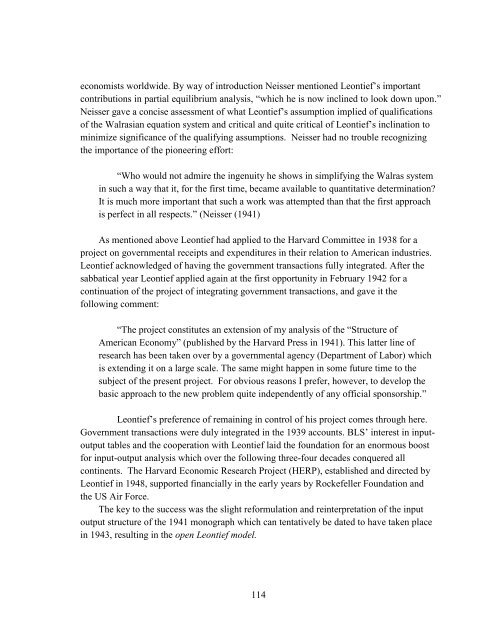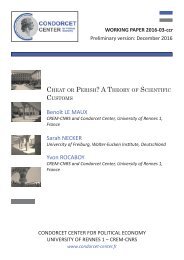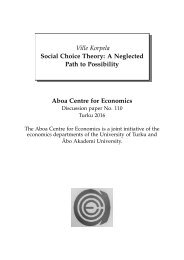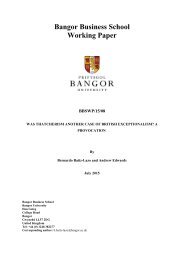MEMORANDUM
n?u=RePEc:hhs:osloec:2016_018&r=hpe
n?u=RePEc:hhs:osloec:2016_018&r=hpe
You also want an ePaper? Increase the reach of your titles
YUMPU automatically turns print PDFs into web optimized ePapers that Google loves.
economists worldwide. By way of introduction Neisser mentioned Leontief’s important<br />
contributions in partial equilibrium analysis, “which he is now inclined to look down upon.”<br />
Neisser gave a concise assessment of what Leontief’s assumption implied of qualifications<br />
of the Walrasian equation system and critical and quite critical of Leontief’s inclination to<br />
minimize significance of the qualifying assumptions. Neisser had no trouble recognizing<br />
the importance of the pioneering effort:<br />
“Who would not admire the ingenuity he shows in simplifying the Walras system<br />
in such a way that it, for the first time, became available to quantitative determination?<br />
It is much more important that such a work was attempted than that the first approach<br />
is perfect in all respects.” (Neisser (1941)<br />
As mentioned above Leontief had applied to the Harvard Committee in 1938 for a<br />
project on governmental receipts and expenditures in their relation to American industries.<br />
Leontief acknowledged of having the government transactions fully integrated. After the<br />
sabbatical year Leontief applied again at the first opportunity in February 1942 for a<br />
continuation of the project of integrating government transactions, and gave it the<br />
following comment:<br />
“The project constitutes an extension of my analysis of the “Structure of<br />
American Economy” (published by the Harvard Press in 1941). This latter line of<br />
research has been taken over by a governmental agency (Department of Labor) which<br />
is extending it on a large scale. The same might happen in some future time to the<br />
subject of the present project. For obvious reasons I prefer, however, to develop the<br />
basic approach to the new problem quite independently of any official sponsorship.”<br />
Leontief’s preference of remaining in control of his project comes through here.<br />
Government transactions were duly integrated in the 1939 accounts. BLS’ interest in inputoutput<br />
tables and the cooperation with Leontief laid the foundation for an enormous boost<br />
for input-output analysis which over the following three-four decades conquered all<br />
continents. The Harvard Economic Research Project (HERP), established and directed by<br />
Leontief in 1948, supported financially in the early years by Rockefeller Foundation and<br />
the US Air Force.<br />
The key to the success was the slight reformulation and reinterpretation of the input<br />
output structure of the 1941 monograph which can tentatively be dated to have taken place<br />
in 1943, resulting in the open Leontief model.<br />
114





